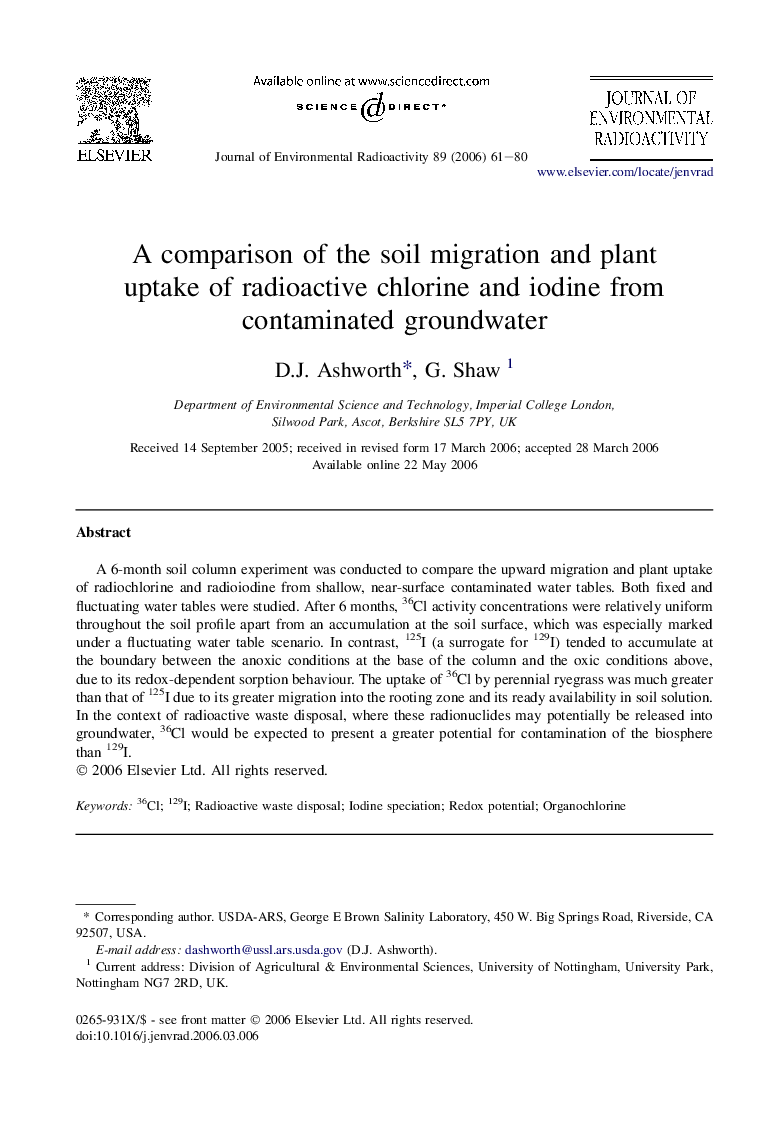| Article ID | Journal | Published Year | Pages | File Type |
|---|---|---|---|---|
| 1739417 | Journal of Environmental Radioactivity | 2006 | 20 Pages |
Abstract
A 6-month soil column experiment was conducted to compare the upward migration and plant uptake of radiochlorine and radioiodine from shallow, near-surface contaminated water tables. Both fixed and fluctuating water tables were studied. After 6 months, 36Cl activity concentrations were relatively uniform throughout the soil profile apart from an accumulation at the soil surface, which was especially marked under a fluctuating water table scenario. In contrast, 125I (a surrogate for 129I) tended to accumulate at the boundary between the anoxic conditions at the base of the column and the oxic conditions above, due to its redox-dependent sorption behaviour. The uptake of 36Cl by perennial ryegrass was much greater than that of 125I due to its greater migration into the rooting zone and its ready availability in soil solution. In the context of radioactive waste disposal, where these radionuclides may potentially be released into groundwater, 36Cl would be expected to present a greater potential for contamination of the biosphere than 129I.
Related Topics
Physical Sciences and Engineering
Energy
Nuclear Energy and Engineering
Authors
D.J. Ashworth, G. Shaw,
